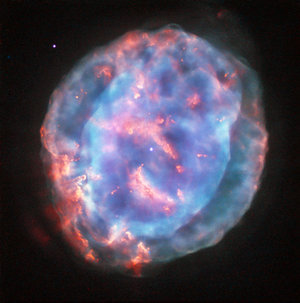Accept all cookies Accept only essential cookies See our Cookie Notice

About ESA
The European Space Agency (ESA) is Europe’s gateway to space. Its mission is to shape the development of Europe’s space capability and ensure that investment in space continues to deliver benefits to the citizens of Europe and the world.
Highlights
ESA - United space in Europe
This is ESA ESA facts Member States & Cooperating States Funding Director General Top management For Member State Delegations European vision European Space Policy ESA & EU Space Councils Responsibility & Sustainability Annual Report Calendar of meetings Corporate newsEstablishments & sites
ESA Headquarters ESA ESTEC ESA ESOC ESA ESRIN ESA EAC ESA ESAC Europe's Spaceport ESA ESEC ESA ECSAT Brussels Office Washington OfficeWorking with ESA
Business with ESA ESA Commercialisation Gateway Law at ESA Careers Cyber resilience at ESA IT at ESA Newsroom Partnerships Merchandising Licence Education Open Space Innovation Platform Integrity and Reporting Administrative Tribunal Health and SafetyMore about ESA
History ESA Historical Archives Exhibitions Publications Art & Culture ESA Merchandise Kids Diversity ESA Brand Centre ESA ChampionsLatest
Space in Member States
Find out more about space activities in our 23 Member States, and understand how ESA works together with their national agencies, institutions and organisations.
Science & Exploration
Exploring our Solar System and unlocking the secrets of the Universe
Go to topicAstronauts
Missions
Juice Euclid Webb Solar Orbiter BepiColombo Gaia ExoMars Cheops Exoplanet missions More missionsActivities
International Space Station Orion service module Gateway Concordia Caves & Pangaea BenefitsLatest
Space Safety
Protecting life and infrastructure on Earth and in orbit
Go to topicAsteroids
Asteroids and Planetary Defence Asteroid danger explained Flyeye telescope: asteroid detection Hera mission: asteroid deflection Near-Earth Object Coordination CentreSpace junk
About space debris Space debris by the numbers Space Environment Report In space refuelling, refurbishing and removingSafety from space
Clean Space ecodesign Zero Debris Technologies Space for Earth Supporting Sustainable DevelopmentLatest
Applications
Using space to benefit citizens and meet future challenges on Earth
Go to topicObserving the Earth
Observing the Earth Future EO Copernicus Meteorology Space for our climate Satellite missionsCommercialisation
ESA Commercialisation Gateway Open Space Innovation Platform Business Incubation ESA Space SolutionsLatest
Enabling & Support
Making space accessible and developing the technologies for the future
Go to topicBuilding missions
Space Engineering and Technology Test centre Laboratories Concurrent Design Facility Preparing for the future Shaping the Future Discovery and Preparation Advanced Concepts TeamSpace transportation
Space Transportation Ariane Vega Space Rider Future space transportation Boost! Europe's Spaceport Launches from Europe's Spaceport from 2012Latest

A cosmic trick of the eye
Thank you for liking
You have already liked this page, you can only like it once!
Stars of different masses end their lives in different ways. While truly massive stars go out in a blaze of glory, intermediate-mass stars — those between roughly one and eight times the mass of the Sun — are somewhat quieter, forming cosmic objects known as planetary nebulas.
Named because of their vague resemblance to planets when seen through early, low-resolution telescopes, planetary nebulas are created when a dying star flings off its outer layers of gas into space. This cloud forms an expanding shell around the central star, while the star itself slowly cools to become a white dwarf. This is what has happened in this NASA/ESA Hubble Space Telescope image, taken in 2007, which shows a planetary nebula known as NGC 2371.
NGC 2371 resides 4300 light-years away from us, in the constellation of Gemini. It is one of the largest planetary nebulas known, measuring roughly three light-years across. Its progenitor star can be seen here as a pinprick of orange–-red light, surrounded by a green, blue and aqua-tinged puff of gas. This shell appears to have a regular, elliptical shape that is sliced in half by a dark lane running through the nebula, which also encompasses the central star.
This dark feature misled astronomers when NGC 2371 was initially catalogued because the two lobes visually resembled two objects, not one. As a result of this confusion, the nebula has two names in William Herschel’s New General Catalogue: NGC 2371 and 2372 (often combined as NGC 2371/2 or NGC 2371-2).
Two prominent pink patches are also visible on either side of the central star. These features are thought to be knots of gas, most likely jets, thrown off by the star at some point in the past. Their pink colour indicates that they are cooler and denser than their surroundings.
The nebula’s central star was once similar to the Sun, but is now only a shadow of its former self. It is slowly cooling after energetically shedding most of its gas, but has a long way to go yet. It currently boasts a scorching surface temperature of over 130 000ºC – some 25 times hotter than the surface of the Sun – and glows with the luminosity of at least 700 Suns.
The hot ultraviolet radiation streaming outwards into the nebula energises the gas it touches, causing NGC 2371 to glow in the beautiful aquamarine colours seen in this image.
This picture was taken in November 2007 by Hubble’s Wide Field Planetary Camera 2. It is a false-colour image created with a combination of filters to detect light coming from sulphur and nitrogen (shown in red), hydrogen (green) and oxygen (blue). The observations were gathered as part of the Hubble Heritage project.
This image was originally published on the Hubble Space Telescope website on 4 March 2008.
-
CREDIT
NASA/ESA/Hubble Heritage Team (STScI/AURA) -
LICENCE
ESA Standard Licence

The death of a star

Hubble views a cosmic oyster and pearl in NGC 1501

The Egg Nebula

Planetary nebula ESO 456-67















 Germany
Germany
 Austria
Austria
 Belgium
Belgium
 Denmark
Denmark
 Spain
Spain
 Estonia
Estonia
 Finland
Finland
 France
France
 Greece
Greece
 Hungary
Hungary
 Ireland
Ireland
 Italy
Italy
 Luxembourg
Luxembourg
 Norway
Norway
 The Netherlands
The Netherlands
 Poland
Poland
 Portugal
Portugal
 Czechia
Czechia
 Romania
Romania
 United Kingdom
United Kingdom
 Slovenia
Slovenia
 Sweden
Sweden
 Switzerland
Switzerland
























